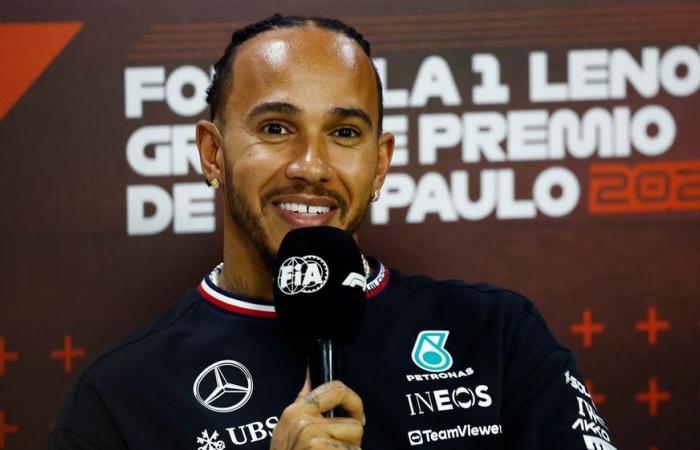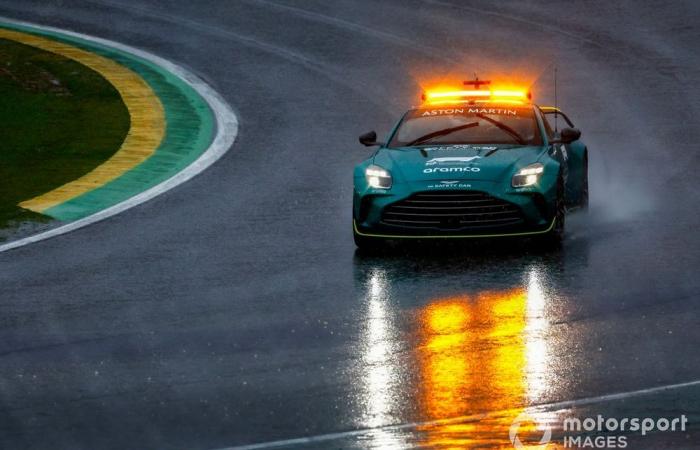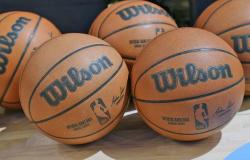Pirelli has responded to Lewis Hamilton’s plea to provide better rain tyres after Formula 1’s Brazilian Grand Prix qualifying had to be postponed for adverse weather conditions.
Qualifying at Sao Paulo was first delayed and ultimately postponed to Sunday morning following heavy rain showers and thunderstorms, which caused standing water on various parts of the circuit.
Despite the best efforts of the marshals, more rain prevented race control from completing a qualifying session ahead of sunset at 18:20 local time, with qualifying instead taking place at 7:30 local time on Sunday morning. With more rain expected, the race time was brought forward to 12:30 to give race control the best odds of getting the race in the books.
Explaining the rain delay
Wet weather
Photo by: Zak Mauger / Motorsport Images
Formula 1 CEO Stefano Domenicali apologised for the delay to the fans, hoping they would understand that “to race in these conditions is impossible”.
While speaking to F1 TV, Domenicali was interrupted by seven-time world champion Lewis Hamilton, who urged the F1 chief to make sure Pirelli provides better wet tyres and brings back the use of tyre blankets for its blue-walled compound, which were only removed last year.
“You should’ve sent us out, this is ridiculous, we should go out!,” Hamilton told Domenicali in a friendly, joking manner. “If you give us better wet tyres or blankets we’d be able to run in this. I’m putting you on the spot right now.”
The viability of Pirelli’s wet tyres has long been a point of criticism among F1 drivers. Because its intermediate compound is much more performant, Pirelli’s full wets have limited use as the conditions in which they are preferred to intermediates are generally too extreme for F1 cars to run in anyway.
Improvements on the horizon?
Pirelli’s motorsports chief Mario Isola acknowledged that the manufacturer needs to step up its rain tyre performance, with development ongoing for next year. But he explained that it is lacking wet tyre testing data from the most demanding circuits to make bigger steps, with wet-tyre tests much harder to organise.
“It is true that we need to improve the performance of the wet tyre to generate a proper crossover with the intermediate,” Isola said.
“That’s our target. Next year we will have a new wet tyre with some small modifications, because unfortunately we didn’t have the possibility to have a proper test with the wet tyre on a high severity circuit. That is exactly what we miss.
“We changed a little bit the tread pattern, worked on the construction and on a new compound. We found an improvement. I cannot tell you if it is enough or not.”
Isola also pointed out that, while he couldn’t speak for FIA race director Niels Wittich and his decision to call off qualifying on Saturday, there were likely several other safety factors behind the postponement of qualifying rather than the performance of Pirelli’s tyres.
The safety car on track in the wet
Photo by: Sam Bloxham / Motorsport Images
“I don’t know why Niels decided not to give it the green light to the session, I don’t know if it is because of visibility, standing water, risk of aquaplaning, or any other element. I didn’t speak to Niels, so I have no information on that.
“If it’s just performance [on the wet tyre]it means that they go slower, that’s all. So the fastest of the slow cars is setting the best time.
“We are fully aware we have to improve the performance of the wet tyre. But you can run on these wet tyres, it’s not that you cannot run.”
As part of Pirelli’s wet-tyre development programme, Mercedes took part in a test at Magny-Cours last month. The test was conducted by Mick Schumacher and George Russell, with Hamilton not taking part.
On the first day of the test reserve driver Schumacher was restricted to just 29 laps as the track was too wet for meaningful running, further underlining F1’s long-standing wet-weather issues.
Pirelli’s other options to test its wet-weather compounds are to head to Fiorano or Paul Ricard, two circuits that have sprinklers installed to wet the track surface.







